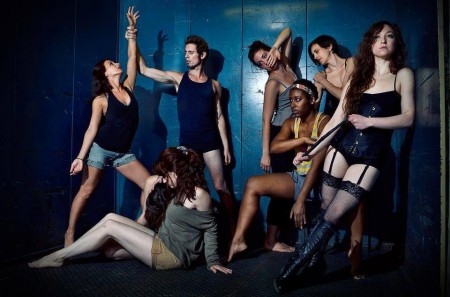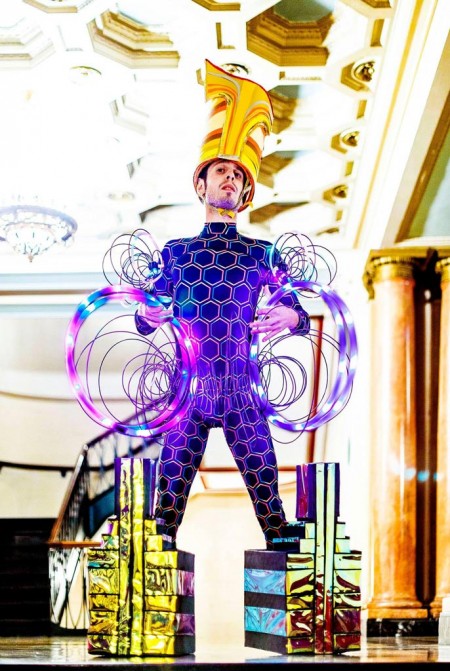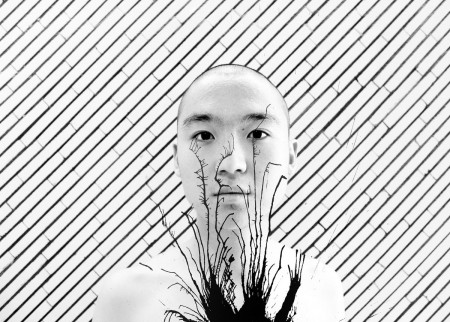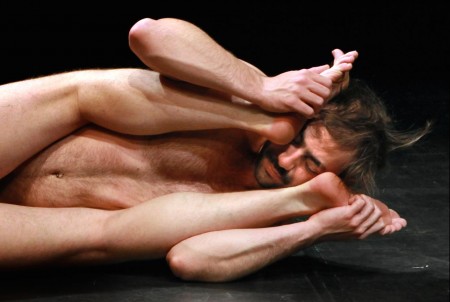Cincinnati is changing. We have seen the revitalization of the urban center and new galleries popping up in each verging neighborhood. Although it has been exciting to live amidst this cultural renaissance, it is also easier to ignore the realities of living in the Midwest. The dedication of individuals to plant roots and create the city they want to inhabit, has brought us here today. Young talented artists are staying put and doing the heavy lifting to create the city they prefer. But in actuality, we are divided now more than ever by age, politics, race and socio-economic fissures. ‘High brow’ art needs to appeal to a wider audience to remain relevant and act as a community bridge. On the same token, we as artists have a desire and responsibility to express to the larger national arts community our stake as a thriving and legitimate hot bed of talent.
Organizations are learning how to strike this balance and reach wider audiences to accommodate these needs. Local organizations can do this one of two ways. They can draw audiences into their institutions, bringing in big names and creating community projects. Or they can take their mission out into the community- teaching through example and making art a part of our existing world. Both approaches are necessary for our insular little-big town to gain the clout it deserves outside the city limits. Widening your net creates more artists and ultimately more emphasis on the arts as a primary part of Greater Cincinnati’s identity.
For performance art, regarded by art history as one of the least accessible mediums, taking this step is all the more pertinent for its growth in the Midwest. Cincinnati is particularly fortunate to have world class performance venues and companies such as the Cincinnati Ballet, Cincinnati Symphony Orchestra, Cincinnati Opera, The Aronoff Center, to name a few. But, these institutions for all their elegance and prestige do not feel like attainable venues to the average person.
Kim Popa co founded Pones Inc., a local performance art group, based on what she learned from actual Cincinnatians. Popa was a student studying dance and social justice at Northern Kentucky University when she had the idea to combine her passions to create a new kind of dance company. She wanted to make a company that held a conversation with the Cincinnati community and responded to both its prides and frustrations. “We didn’t know what we were doing,” says Popa. “It was one of those things we didn’t think much about but I look back now and see how vital it was to our development.” Early on Popa conducted an informal survey, stopping strangers on the street and asking them about their experience with dance. She asked questions like “Do you go see live dance performances?”, then “Why?” or “Why not?”. She surveyed a wide a range of people, attempting to span demographics. What she found informed how she structured the multi-faceted and popular company she runs today.

Beyond financial access and free time, which proved as well to be important factors, she learned that people were intimidated by attending performances. Individuals seemed to shy away from traditional venues, finding that there was no natural intersection with their everyday lives. “The question that got the most telling answers,” says Popa “was ‘What is your first memory of dance?’”. This produced the most candid answers, and opened a door to a flood of memories. People recalled watching their mother dance in the kitchen or celebrating at a family gathering. Memories of dance before it was loaded with the cultural stigmas and assumptions we attach to it as adults. “I realized that these people had been dancing throughout their lives but had detached those memories from their conception of professional dancing – and even more so from something they could do themselves.”
From there Pones Inc. worked to build their organization to combat these divides. Established in 2008, Pones Inc. started by partnering with institutions like the Know Theater and The Contemporary Arts Center (CAC). They brought their dance into the public with performances at Whole Food and Ikea. Their goal was to enter the public sphere in a non-threatening way and introduce people to what New Modern Dance could mean for them.

The flash mob craze started to take hold around the same time and Pones was often lumped in with the fad. “We never sought out to do flash mobs but if that helped people into our work that’s a good thing. It was less a flash mob and more a way to bring real New Modern Dance into the public. We were doing an improvised rehearsal.”
They worked with local musicians to create their own line dances. They produced choreographed works in the vein of the ‘Cha Cha Slide’ using Modern dance techniques with instructions built into the songs. Pones was able to bring the audience into their performances and break down perceived barriers about professional dance. Their work now blends into all kinds of urban and neighborhood spaces. They produce site specific work and have performed in over 90 Greater Cincinnati locations. Their company consists over 60+ members, from professional dancers to hobbyists. Popa puts no requirements on her dancers other than a commitment to movement and a good attitude. They often work with local artists to create one of a kind costumes, making each of their performances an exercise in collaboration. This openness has helped make Pones Inc. a more accessible organization for both participants and audience.

Popa’s roots in social justice have steered Pones Inc. to pursue some unorthodox collaborations in unique venues reaching even more distant audiences. In the fall of 2015 Pones Inc. performed POV: A dance exploration of poverty, homelessness and the Over-the-Rhine neighborhood in partnership with the Cincinnati Homeless Coalition, Queen City Flash, Young Choral Professional Collective and more. Starting in Washington Park, dancers and audience moved through the urban space and highlighted the struggles and injustice still very present in this gentrified neighborhood.
Their educational programing goes into schools across the city, the VA, and will even begin work with both Hospice Care patients and families. These programs focus on story telling, easing students through traumatic experiences with simple movements. “We see people you would never expect getting energized by dance. Our VA participants tell us that dance class is the highlight of their week.”
Popa looks forward to performances she has in the works that will continue to shed light on some of the most painful and controversial issues in our area. They will be working with women and the trans population who have been trafficked in the sex trade, helping to highlight the stories of some of the most hidden figures in society. Popa is also working with artist Pam Kravetz and local immigrant and refugee populations. They hope to redefine our conception of immigrants to show a more broad and realistic picture of their lives and contributions in Cincinnati. “These types of performances require a tremendous amount of trust. We start with movement and story harvesting workshops, creating a safe space to express memories and experiences. Then we take what we have learned and turn it into a formal performance with professional dancers. We try to include the actual people when possible but in some cases they cannot or do not want to dance themselves. It’s important for us to respect that.”
Among their many performances Pones Inc. worked most closely with Drew Klein of The Black Box Theater at the Contemporary Arts Center to produce the work Borrowed Landscape in 2015. This work directed by artists Heine Avdal and Yukiko Shinozaki was performed in various commercial settings around the country including a model house, a shopping mall, and the foyer of a theatre. This time the audience went shopping at Whole Foods while wearing headphones and listening to facts, trivia and prompts provided by the artists. In a 2015 WCPO article, Klein describes the performance experience as “a few people are in on a secret, playing a game that can only be appreciated and understood when you pay careful attention.” The goal was to make the audience aware of the rules and routines that dictate the way we move through particular spaces without being intimidating. The performance drew audiences and cast a wider net for both Pones inc. and the CAC.
Klein’s work as curator of New Performance at the Contemporary Arts Center (CAC) seeks to make performance a more accessible medium in Cincinnati much as Kim Popa has. However, their approaches and roles in our local landscape serve very different purposes. Klein moved back to Ohio after spending his post college years in New York City. Like many Ohioans who have felt stereotyped by their origin in the eyes of the larger art world, he rejected his identity as a Midwesterner. Being a musician, Klein always had a passion for performance and found a natural outlet in the film industry. He was working on the Banksy film “Exit Through the Gift Shop” when he reconnected with the CAC to organize a screening. This happened as Klein was feeling disenchanted by the film industry and an urge to return to a more immediate medium. “It has always been about the live moment for me, especially when it is done really well- with thought and an interest in execution” says Klein. At the time CAC was recommitting to producing a comprehensive schedule of performance. Together they have created the Black Box Theater series which is responsible for bringing in outside talent to Cincinnati.
The CAC and Klein have built an incredible line up of performers year after year, especially gaining momentum in recent seasons. They are extending their reach into more interdisciplinary works and showing work which straddles the lines between dance, theater and performance art. Where Pones Inc. is moving out into communities, the CAC is drawing people in from around the city and beyond. The CAC as an institution is as inextricable as the Zaha Hadid building it inhabits. Part of the art experience is that of the building. The building facilitates an elevated and world class arts experience, while being nestled in the heart of downtown. The Black Box Theater as an extension of that experience, creates a space devoid of context. Located in the basement, away from city sounds, the theater itself is secluded from the audience’s frame of reference. This space itself provides an important venue for people to lose themselves in a performance. The CAC provides a space for people who have never been exposed to this type of work to catch a glimpse and be inspired.

Klein is quick to acknowledge the many other institutions which are creating and showcasing new performance art. “We were by no means the first game in town. There are a lot of the great underground and experimental institutions who have been doing this a long time. Each place contributes its own point of view. Wave Pool for instance is doing some amazing things. We have found that our place in Cincinnati’s landscape is bringing in spectacular international work.” Finding these artists takes an incredible amount of research and investment. “I do a ton of research, endless research. I follow trends in the art world and follow the paths of artists’ careers. I look for connections and collaborators where I can and follow threads to new people. I’ve been fortunate to make connections on a personal level and work hard to invest in those relationships. I’m always looking to make the right kind of friends and partners who can continue to educate me on how to be a better curator.” Above all Klein is dedicated to keeping the breadth of his interests wide. He is careful not to shut himself off from any kind of performance and to maintain a balance that does not focus too heavily on one area.
For a given season Klein may review over 150 performers, narrowing down to 50 possible projects and ultimately show 10-12 works in a season. As one of the largest and most established arts institutions in the city Klein and the CAC have a responsibility to elevate Cincinnati’s clout in the larger world but Klein is clear that he does not pick just to appeal to critics. Klein sees two types of New Performance curators: one from a visual arts background who uses their knowledge from art school to realize performance in a gallery setting. Klein falls more closely to the second variety which gravitates towards work that relies more on dance and theater techniques. “A lot of what I’m interested in pulls from forward thinking dance schools and theater cultures. The audience is my biggest focus and the community impact. I’m interested in performers who can move the dial and introduce people to a new art form. ” His approach means paying more attention to the audience’s experience and not just that of the artists.
In addition to bringing in talent, the CAC has a commitment to commissioning live work from local artists. Jennifer Jolley, Eddy Kwon and Napoleon Maddox are among the artists who have created new work for the Center. “It’s an exciting new territory for the CAC. We are growing ties to the community in this city. Showing in the Black Box gives local artists an opportunity to carefully consider their work and totally invest themselves in it.” It also gives these local names a national platform to showcase their work.

CAC has brought in some of the more boundary pushing work of the past years. Performances like Still Standing You by CAMPO/Pieter Ampe & Guilherme Garrido left audiences shocked and ready for more. “It is the coming together of many individuals. Each institution is contributing in a different way. At the CAC we have an audience which is interested in fearless work and want to take risks.” Since the Black Box Theater is part of a multidisciplinary arts organization, the structure of their calendar requires shows to turn over quickly. As a result, audiences come into new shows fresh and without preconceived notions from the outside. The space maintains a fluidity and continues to challenge its viewers. Despite the ever growing interest, some shows still only attract small crowds. “I am in my fifth season and only recently did I stop being surprised when I didn’t recognize someone’s name on the ticket list. I get excited when I see that the audience is largely made of newcomers to the Black Box. It’s ok when we have smaller performances though, it’s important to maintain the balance between big names and experimental work.”, “I have seen an appetite growing for this work here and as long as we continue to prioritize performance it will continue to grow.”

“I am committed to affecting change in Cincinnati. I always wanted to get the hell out of Ohio. I had a lot of pride that I was able to move to New York and leave my Ohio identity behind. Now I can’t stand it when people put down Cincinnati. People think Ohio is a wasteland for provocative thought and new art. I want to change people’s perceptions of Cincinnati and find new ways to be proud of where we are. We are a red state now- we have disappointed the liberal majority. We have an even bigger responsibility to maintain a strong and collective voice to fight against those notions. We need to show that there is extraordinary talent here in Cincinnati.”
Pones Inc. and the Black Box Theater are only two examples of local groups working to bridge the gaps and make performance art part of Cincinnati’s identity. Expanding out into communities and introducing dance through accessible means has made Pones Inc. a city wide dance experiment. Popa has seen results she never expected. “I never dreamed an experimental dance company could sustain a career for me in a city like Cincinnati, but we’ve been able to find our niche” says Popa. “It’s been amazing to see that people are receptive to it.” The CAC is pulling crowds into the urban center and challenges us to be receptive to new forms of expression. Their continued interest in performance art gives us more opportunities to be noticed outside our local sphere. Cincinnati, like many Midwestern cities, is experiencing an identity crisis. It is the responsibility of the artists and curators who live here to continue to push boundaries and change our perceptions both within the city and on the national stage. There is tremendous talent here in our city; let’s make our voices heard.
-Chelsea Borgman is an artist and writing working in Cincinnati, Ohio. She is the gallery director at C-LINK Gallery in Brazee Street Studios